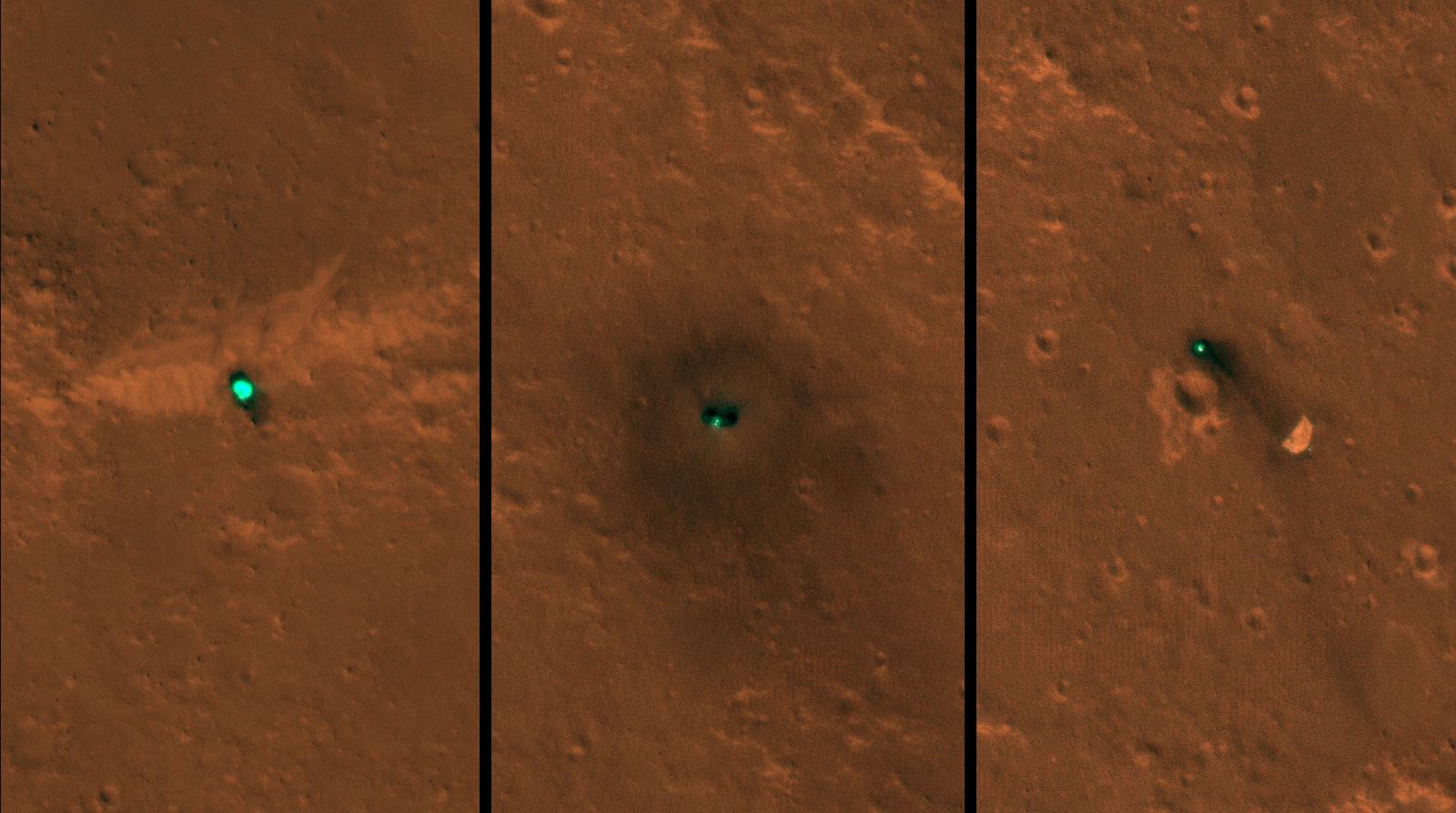Any comments, suggestions or just looking for a chat about this subject? Don't hesitate and leave a comment on our improved comment section down below the article!
NASA's InSight spacecraft, its heat shield and its parachute were imaged on Dec. 6 and 11 by the HiRISE camera onboard NASA's Mars Reconnaissance Orbiter. - Image Credit: NASA/JPL-Caltech/University of Arizona
On Nov. 26, NASA's InSight mission knew the spacecraft touched down within an 81-mile-long (130-kilometer-long) landing ellipse on Mars. Now, the team has pinpointed InSight's exact location using images from HiRISE, a powerful camera onboard another NASA spacecraft, Mars Reconnaissance Orbiter (MRO).
The InSight lander, its heat shield and parachute were spotted by HiRISE (which stands for High Resolution Imaging Science Experiment) in one set of images last week on Dec. 6, and again on Tuesday, Dec. 11. The lander, heat shield and parachute are within 1,000 feet (several hundred meters) of one another on Elysium Planitia, the flat lava plain selected as InSight's landing location.
In images released today, the three new features on the Martian landscape appear teal. That's not their actual color: Light reflected off their surfaces causes the color to be saturated. The ground around the lander appears dark, having been blasted by its retrorockets during descent. Look carefully for a butterfly shape, and you can make out the lander's solar panels on either side.
This isn't the first time HiRISE has photographed a Mars lander. InSight is based largely on 2008's Phoenix spacecraft, which the camera aboard MRO captured on the surface of Mars as well as descending on its parachute. While the HiRISE team at the University of Arizona also tried to take an image of InSight during landing, MRO was at a much less opportune angle and wasn't able to take a good picture.
About InSight
JPL manages InSight for NASA's Science Mission Directorate. InSight is part of NASA's Discovery Program, managed by the agency's Marshall Space Flight Center in Huntsville, Alabama. Lockheed Martin Space in Denver built the InSight spacecraft, including its cruise stage and lander, and supports spacecraft operations for the mission.
A number of European partners, including France's Centre National d'Études Spatiales (CNES) and the German Aerospace Center (DLR), are supporting the InSight mission. CNES and the Institut de Physique du Globe de Paris (IPGP) provided the Seismic Experiment for Interior Structure (SEIS) instrument, with significant contributions from the Max Planck Institute for Solar System Research (MPS) in Germany, the Swiss Institute of Technology (ETH) in Switzerland, Imperial College and Oxford University in the United Kingdom, and JPL. DLR provided the Heat Flow and Physical Properties Package (HP3) instrument, with significant contributions from the Space Research Center (CBK) of the Polish Academy of Sciences and Astronika in Poland. Spain’s Centro de Astrobiología (CAB) supplied the wind sensors.
The University of Arizona, Tucson, operates HiRISE, which was built by Ball Aerospace & Technologies Corp., Boulder, Colorado. NASA's Jet Propulsion Laboratory, a division of Caltech in Pasadena, California, manages the Mars Reconnaissance Orbiter Project for NASA's Science Mission Directorate, Washington.
Source: NASA press release
If you enjoy our selection of content please consider following Universal-Sci on social media:











